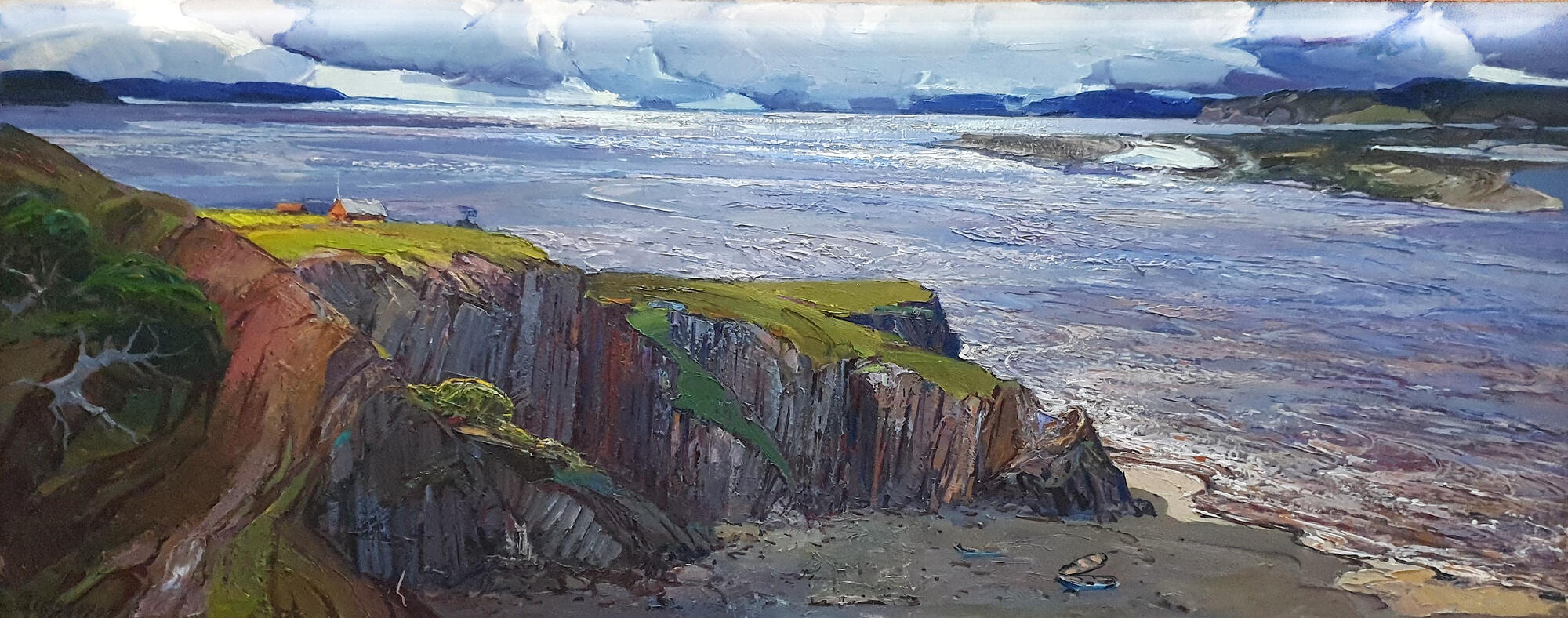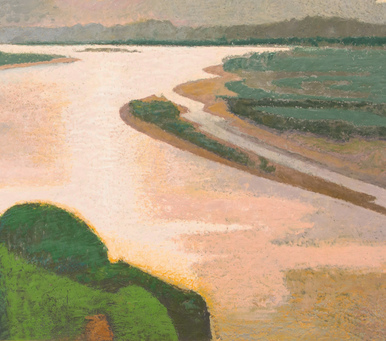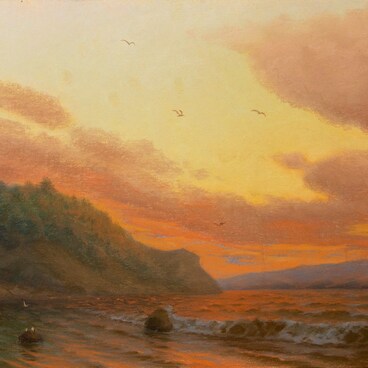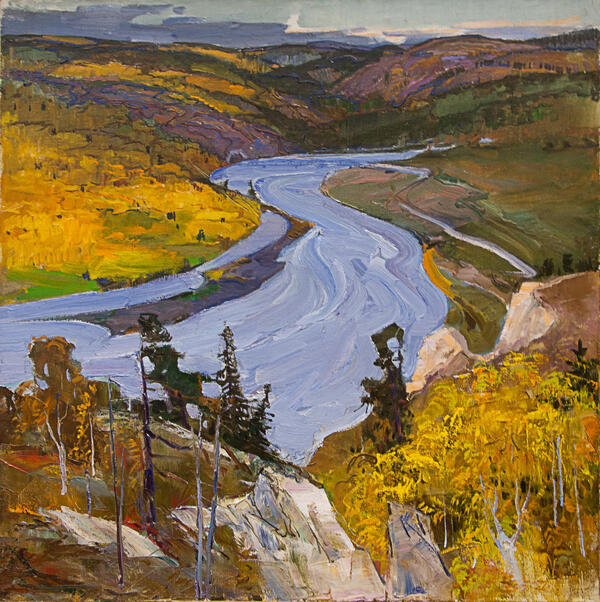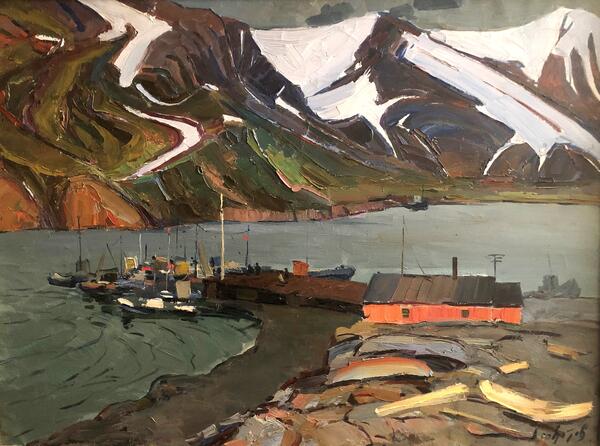The landscapes of Siberia and Russian Far East painted by Alexey Fedotov are characterized by the use of a large scale, bold colors and life-affirming attitude.
The Amur River was such a powerful source of inspiration for the artist that he literally could not fit all of it into a standard format. Alexey Fedotov felt as if nature itself encouraged him to use a brighter and more decorative palette with numerous transitions and nuances, larger and more lively brushstrokes and even a larger canvas.
A typical Fedotov landscape usually depicts a view from a high point. The higher than usual horizon line gives the image a panoramic touch and at the same time shows the way the majestic hills contrast with the people, huddled at their foot.
“The Amur Landscape” creates this contrast using a wide river, arranged diagonally across the canvas, the sky with overhanging leaden clouds, mighty cliffs covered with plants and at the same time abandoned toylike boats on the shore and a small wooden house with an outbuilding.
The feeling of being at the windy mountain top is intensified by the divergent brushstrokes, applied to the canvas in thick layers using both a brush and a palette knife. The strokes create a peculiar effect of the moving air, which is also reflected in the water, trees and grass.
Alexey Fedotov used the impasto technique, which involves painting in thick opaque layers. Such strokes of paint create additional relief on the surface, intensify the expressive nature of the painting and emphasize the shape of the objects in focus. The opposite of this technique is glazing, which is painting in thin diaphanous strokes. The impasto technique works best with oil paints, given their thickness and viscosity.
In this painting, Alexey Fedotov depicted an overcast day, yet his interpretation inspires rather than discourages and conveys a powerful boost of energy from both nature and the artistic impulse.
The Amur River was such a powerful source of inspiration for the artist that he literally could not fit all of it into a standard format. Alexey Fedotov felt as if nature itself encouraged him to use a brighter and more decorative palette with numerous transitions and nuances, larger and more lively brushstrokes and even a larger canvas.
A typical Fedotov landscape usually depicts a view from a high point. The higher than usual horizon line gives the image a panoramic touch and at the same time shows the way the majestic hills contrast with the people, huddled at their foot.
“The Amur Landscape” creates this contrast using a wide river, arranged diagonally across the canvas, the sky with overhanging leaden clouds, mighty cliffs covered with plants and at the same time abandoned toylike boats on the shore and a small wooden house with an outbuilding.
The feeling of being at the windy mountain top is intensified by the divergent brushstrokes, applied to the canvas in thick layers using both a brush and a palette knife. The strokes create a peculiar effect of the moving air, which is also reflected in the water, trees and grass.
Alexey Fedotov used the impasto technique, which involves painting in thick opaque layers. Such strokes of paint create additional relief on the surface, intensify the expressive nature of the painting and emphasize the shape of the objects in focus. The opposite of this technique is glazing, which is painting in thin diaphanous strokes. The impasto technique works best with oil paints, given their thickness and viscosity.
In this painting, Alexey Fedotov depicted an overcast day, yet his interpretation inspires rather than discourages and conveys a powerful boost of energy from both nature and the artistic impulse.
